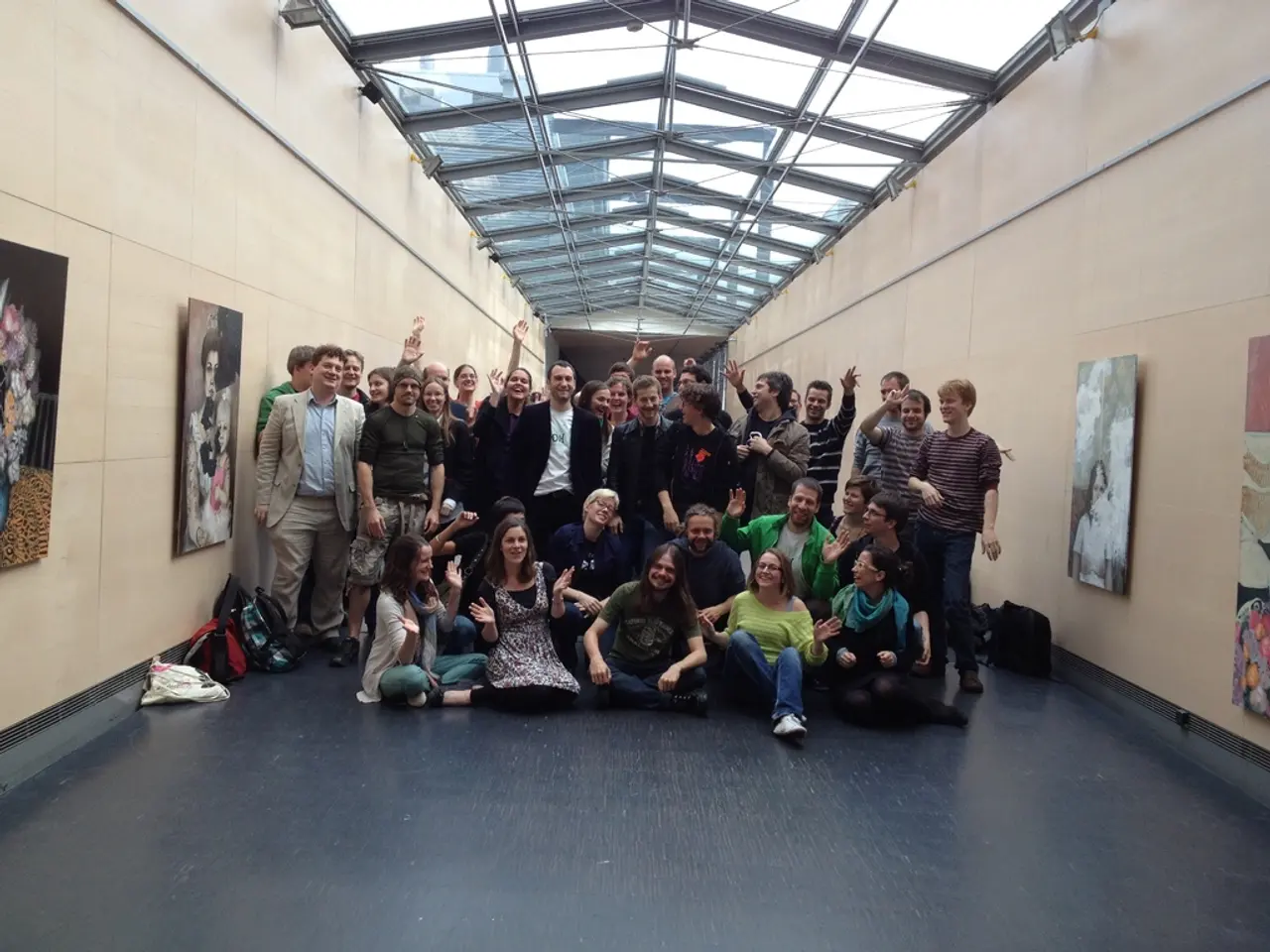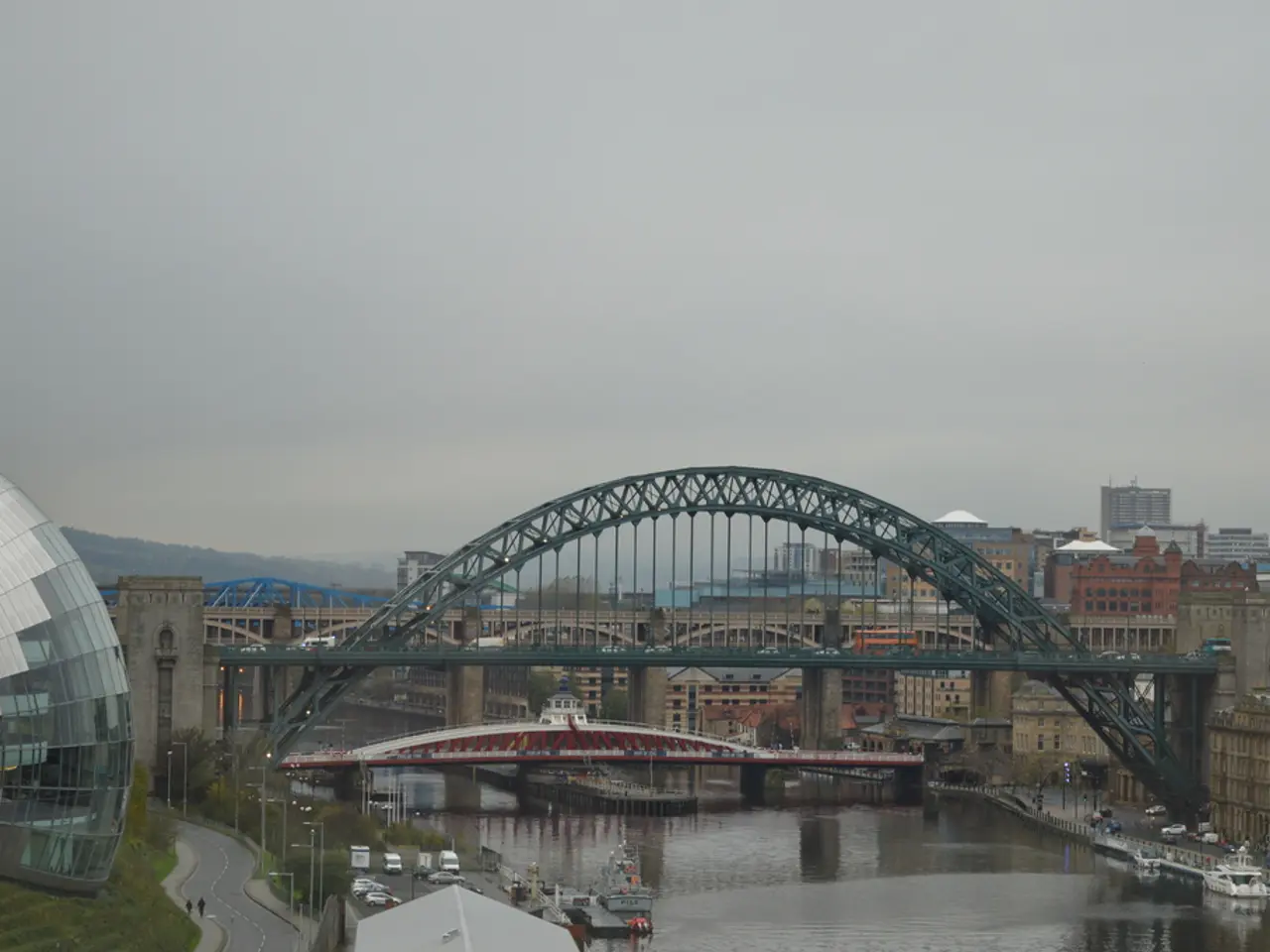Uncovering insights about your community's Creative Industries: A step-by-step guide
In a rapidly evolving economic landscape, the fusion of arts and science skills in businesses has been identified as a key driver for growth, productivity, and innovation, according to the paper "The Fusion Effect: The economic returns to combining arts and science skills (2016)". This fusion is not just beneficial for creative industries but extends to companies outside this sector as well.
Understanding the creative industries, however, can be challenging due to the high number of freelancers, small businesses, and the cutting-edge nature of sub-sectors and jobs. Traditional data sets often fall short in serving the Creative Industries effectively. Local authorities can bridge this gap by conducting a comprehensive diagnostic assessment that combines both quantitative and qualitative data gathering methods.
Fieldwork, stakeholder consultations, focus groups, case studies, and mapping existing creative hubs and organizations help paint a more accurate picture of the local creative economy. Qualitative research methods, such as coding and thematic analysis of discussion transcripts, provide valuable insights into skills, barriers, and needs, facilitating evidence-based strategy design.
In contexts where official statistics are scarce or incomplete, local authorities can turn to primary data collection, participatory and mixed-methods approaches, and even data scraped from creative companies' websites to gain a deeper understanding of the local creative industries.
The British Academy's work "Place Based Approaches to Research Funding (2021)" is part of their efforts to support place-based policy, particularly in the Arts, Humanities, and Social Sciences. The Intellectual Property Office, through its support, can help regional growth by leveraging intellectual property as an important driver of intangible assets, as demonstrated in the blog post "Blog: Levelling Up: how we're helping UK businesses to build through IP(2022)".
The Creative Industries Policy and Evidence Centre (PEC) has compiled a wealth of research on this topic, including "A First Look at Connections Between the Presence of Creative Industries and the Wider Urban Economy (2020)", "Createch Activity in the UK (2021)", and "Creative Industries Radar: Mapping the UK's creative clusters and microclusters (2020)".
The 'Preston Model' of strengthening supply chains through local procurement by anchor institutions, like local government and universities, could support creative economy microclusters, as shown in the paper "Supporting the Creative Industries: The Impact of the 'Preston Model' in Lancashire (2022)".
Moreover, the paper "Hipsters vs. Geeks? Creative workers, STEM and innovation in US cities (2020)" highlights that city regions with a high share of both creative and STEM workers are the most innovative. The paper "Valuing Culture and Heritage Capital: A framework towards informing decision making (2021)" sets out the Department for Digital, Culture, Media and Sport's (DCMS) ambition to develop a formal approach to valuing culture and heritage assets.
Lastly, it is recommended that local authorities engage with anchor institutions, such as large public art organizations and universities, for potential links into the sector. Researchers have also found value in piggybacking on existing surveys used by others to access an archive of information, including historical data, which puts individual surveys in context.
The paper "Mapping and examining the determinants of England's rural creative microclusters (2022)" emphasises the importance of existing cultural institutions and local universities offering creative subjects in supporting the development of creative industries microclusters in rural areas and towns. Overall, a comprehensive and nuanced understanding of the creative industries is crucial for targeted support and policy formulation tailored to unique local contexts.
- The fusion of arts and science skills in businesses is identified as a key strategy for economic development, enhancing growth, productivity, and innovation.
- The creative industries, with their numerous freelancers and small businesses, present a challenge in data collection due to the cutting-edge nature of sub-sectors and jobs.
- Local authorities can utilize comprehensive diagnostic assessments that combine quantitative and qualitative data gathering methods to bridge this data gap.
- Fieldwork, consultations, focus groups, case studies, and mapping creative hubs and organizations contribute to a more accurate understanding of the local creative economy.
- Qualitative research methods, such as coding and thematic analysis, provide insights into skills, barriers, and needs, facilitating evidence-based strategy design.
- In contexts with scarce or incomplete official statistics, local authorities can resort to primary data collection, participatory and mixed-methods approaches, and even scraped data from creative companies' websites.
- The British Academy supports place-based policy, particularly in the Arts, Humanities, and Social Sciences, through works like "Place Based Approaches to Research Funding (2021)".
- The Intellectual Property Office can help regional growth by leveraging intellectual property as a driver of intangible assets, as demonstrated in the blog post "Blog: Levelling Up: how we're helping UK businesses to build through IP(2022)".
- The Creative Industries Policy and Evidence Centre (PEC) has conducted research on the presence of creative industries and their impact on the wider urban economy, including reports like "A First Look at Connections Between the Presence of Creative Industries and the Wider Urban Economy (2020)".
- To support creative economy microclusters, the 'Preston Model' proposes strengthening supply chains through local procurement by anchor institutions like local government and universities, as showed in the paper "Supporting the Creative Industries: The Impact of the 'Preston Model' in Lancashire (2022)".






